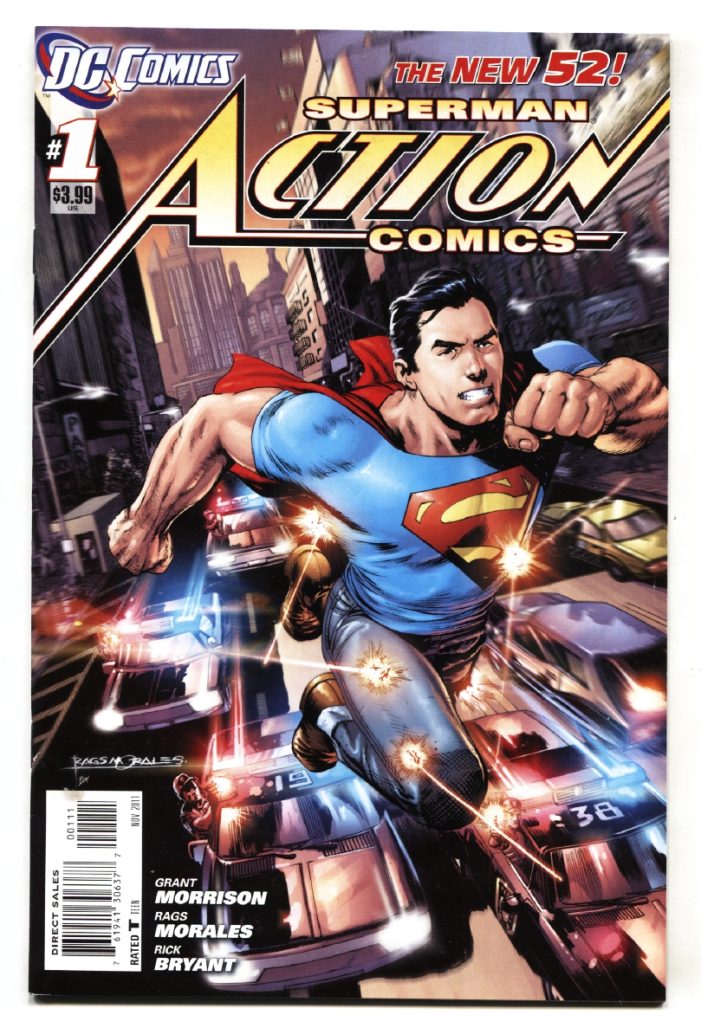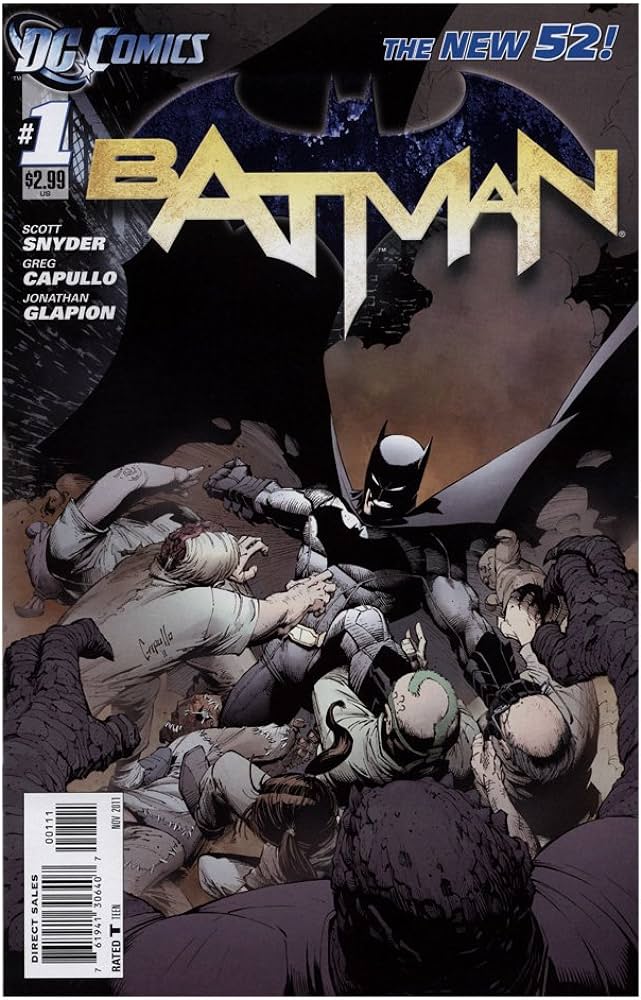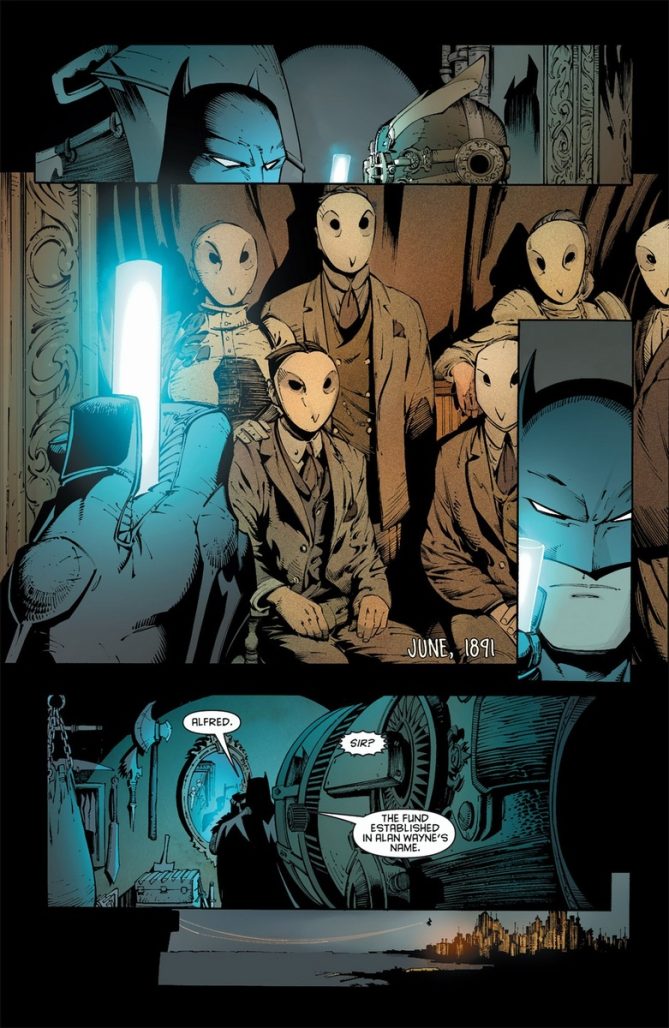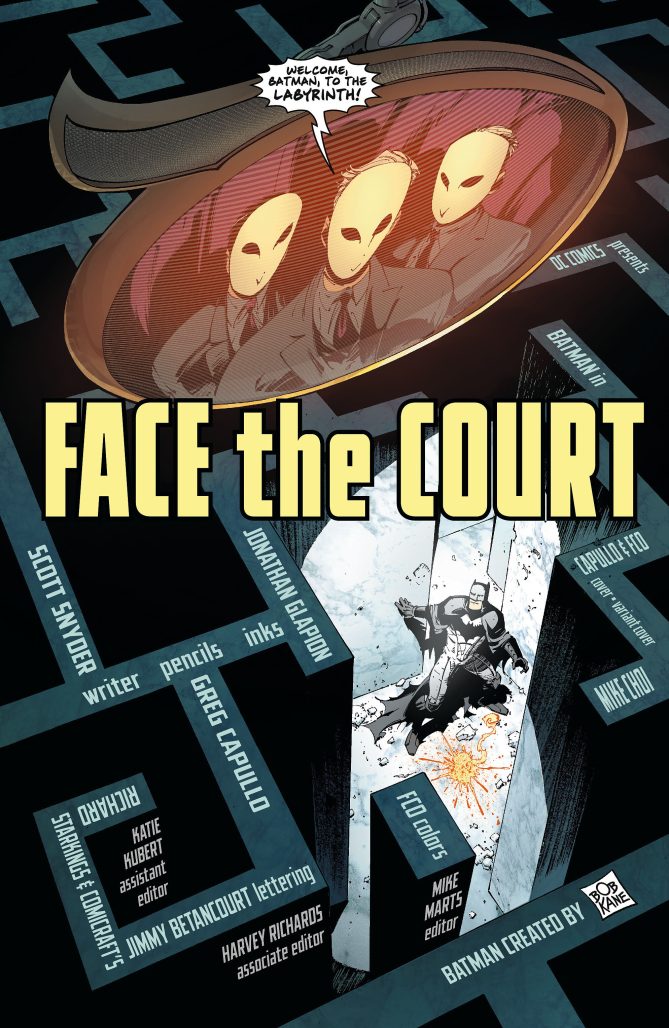The Beat’s Gregory Paul Silber has been accused of having a bit of an… obsessive personality. Each week in Silber Linings, he takes a humorous look at the weirdest, funniest, and most obscure bits of comics and pop culture that he can’t get out of his head.
I’ve written about it before in this column, but I’m one of The New 52’s success stories. It’s possible that timing played a greater role in that than anything else. After all, my life in September of 2011 was such that I was hungry to take on a new hobby, and I had already dipped my toes into older DC comics anyway. It just so happened that by the time I was ready to dive into current comics, DC was starting a line-wide reboot. Enough has been said about DC’s New 52 by now that there’s no need for me to re-litigate its vices or defend its virtues.
But there was one comic at the start of The New 52 that both followed through on the initiative’s mission to draw in new readers while standing on its own as a great Batman story that longtime fans can enjoy as much as the newbies: The Court of Owls, which kicked off in Batman (2011) #1 and continued through #12. You may also enjoy the “Night of the Owls” crossover involving other Bat Family titles like Nightwing and Batgirl, but for the sake of streamlining, I will focus on Batman here. You really only need those 12 issues to follow along.
That’s not to say that The Court of Owls, or the entire New 52 Batman run written and drawn primarily by Scott Snyder and Greg Capullo, respectively, was the only comic DC published at the time that was worth reading. But of the comics I’ve read from that era (I can’t read ’em all, folks!), it’s the one that best balances accessibility, forward momentum for the fictional universe it’s set in, and sheer comic book craft.
Take Grant Morrison and Rags Morales‘ initial Action Comics arc, for example. Don’t get me wrong, that’s a great series. If you’re a Superman fan who hasn’t read it because you don’t want to read the umpteenth retelling of his origin, I couldn’t recommend it more highly. It’s much bolder and surprising than you’d expect from the premise. And yet, especially for the purposes of this discussion, the fact remains that those first several New 52 Action Comics issues were an origin retelling nonetheless.


Then you had books like Francis Manapul and Brian Buccellato‘s New 52 run on The Flash, which, while also entertaining, almost had the opposite problem. Rather than retell The Flash’s origin, it took place 5 years after the New 52 universe apparently began, as did almost every other New 52 comic by default, including Snyder and Capullo’s Batman. Despite not starting from the character’s “beginning,” Manaupul and Buccellato’s early Flash run was quite accessible to new readers like me – I hadn’t even read any Flash comics before that point.
The problem, at least in terms of the New 52’s supposed commitment to accessibility, was that I’d imagine it was actually somewhat inaccessible to veteran Flash fans. After all, the only Flash of the New 52 DC universe at that point was Barry Allen, and I don’t recall any explanation for the absence of Wally West: Barry’s nephew-by-marriage, former kid sidekick, and in the pre-Flashpoint DC Universe, the Flash himself following Barry’s death. If nothing else, the consensus among DC Comics fans, myself included, seems to be that Wally is the superior speedster, and I know several seasoned readers were frustrated to see him shelved in favor of his comparatively dull predecessor.
By comparison, Snyder and Capullo’s Batman managed the incredible feat of being easy to follow for new readers while reading like a continuation of The Caped Crusader’s previous adventures, giving veteran readers something new and exciting to dig into. Granted, Batman and much of the wider Bat-family continuity was left relatively intact compared to most of their DC brethren at the start of The New 52, but since it’s been 13 years since the start of that publishing initiative, I think it’s about time we talk about The Court of Owls on its own merits, outside the context of a divisive reboot.
As long as you’re even vaguely familiar with Batman—you know, “darkness, no parents, super rich”—you can follow The Court of Owls just fine. Hell, even if you’ve somehow lived under a rock deeper than the Batcave and somehow never heard of Batman, I’d still recommend starting with “the Court of Owls.” There was a time when I would’ve recommended Frank Miller and David Mazzucchelli‘s legendary Batman: Year One first, and while that might still be the greatest Batman story ever published, it’s very 80s and works better if you’re already well-versed in Gotham lore.
(It’s worth noting here that Snyder and Capullo also did an extensive Batman origin story later in their run called Zero Year, and while it’s a surprising and entertaining read in its own right, I’m not sure how well it would work outside of the context of the larger Snyder/Capullo run).
Snyder was wise to start his all-time-great run on Batman with a mystery story, emphasizing Batman’s reputation as “the world’s greatest detective” and setting up plenty of tantalizing secrets to unlock for both seasoned Bat-fans and newbies. When several key figures in Gotham City are targeted for assassination, Batman discovers an underground cult known as “The Court of Owls” who apparently know even more about Gotham City than The Dark Knight himself. With ultra-skilled assassins known as Talons at their disposal, the court uses murder and deception in an attempt to bend Gotham City to their will.
It’s a brilliant conceit for new additions to Batman’s already superlative rogues gallery. A great villain should highlight the hero’s strengths and exploit their weaknesses. In the case of the Owls, they play on Batman’s confidence and naivete regarding his familiarity with his own city. Batman thought he knew all of Gotham’s nooks and crannies, and the Court challenges that notion to deadly effect.
I don’t want to give much more away because, at its heart, The Court of Owls is a mystery story with some pretty interesting ramifications for the wider Bat family if you’re into that kind of thing. But of course, the journey is more important, and Scott Snyder flexed his superhero fiction skills with this story and his chops as a horror writer.
At the time, Snyder was quite young, with few credits to his name. Still, he had proven himself as a horror writer through comics like the long-running American Vampire series with artist Rafael Albuquerque (the first volume of which featured backups written by none other than Stephen King), as well as the horror-tinged pre-New 52 Detective Comics arc The Black Mirror, which featured excellent and appropriately spooky art by the likes of Jock and Francesco Francavilla. The Court of Owls dials back the overt horror of that story a little bit, but the owls are legitimately creepy, and not just with cheap ultraviolence like many comics of the time.
The Court of Owls still feels contemporary and, in retrospect, has easily aged better than most of DC’s output of the same period. Naturally, a lot of that comes from the visuals. While some may have previously regarded Capullo as a quintessential ’90s artist as he made a name for himself through an extensive run on Todd McFarlane‘s Spawn, he escaped that artist’s long shadow with energetic line-work and inventive layouts from the beginning of his long-running collaboration with Snyder to the final issues of their Batman run and beyond.
For this story, Snyder and Capullo were joined by inker Jonathan Glapion. Later in their Batman run, Capullo was inked by Danny Miki. While I generally like the latter’s “clean” inking style, for an artist like Capullo, I think he’s better matched with an inker like Glapion, who retains the “rough” edges of the pencils. FCO Plascencia provided color art, a great mix of a muted palette with pops of bright colors. And then there’s veteran letterer Richard Starkings, who, among other talents, guides readers even through Capullo’s wildest layouts.
I keep bringing up layouts because that may be Capullo’s greatest talent as an artist. No two pages look the same structurally, making for a dynamic and surprising reading experience. This is most apparent in the fifth issue when Batman finds himself trapped in the Owls’ underground lair. The book shifts from a horizontal to a vertical perspective, then forces the reader to rotate the comic in their hands again until they’re reading the story upside-down. It’s disorienting because, for a moment, you’re not sure where to turn next, reflecting Batman’s own psychological quandary.
Snyder and Capullo have been open that while they’re great friends and regular collaborators now, their relationship upon initially working on Batman together was fraught. That fifth issue was significant, partly because it’s the moment I (and surely many other readers) realized their collaboration was shaping up to be truly special.
However, according to Snyder and Capullo, it was also the moment that they started to put their differences aside and come together as collaborators. DC editorial was wary of the rotating page trick, and, as the creators tell it, Capullo wrote an impassioned email insisting that the book got printed the way he and Snyder intended, forcing Snyder to realize what a strong creative relationship the two could have if they continued to work together.
The strength of that collaboration makes The Court of Owls work as well as it does. It continued throughout the rest of their nearly 5-year run, with Capullo taking a few much-needed breaks between arcs as other talented artists lent their visuals to the series for brief bursts.
If you enjoy The Court of Owls, I highly recommend reading the rest of the New 52 Batman run from there. It has ups and downs like any long-running comic, but its quality is still remarkably consistent. There’s no shortage of other great Batman comics out there. However, if you want a big, meaty story to familiarize yourself with Batman comics, or even if you’re a longtime Batman fan who happened to skip this one, I couldn’t recommend Snyder and Capullo’s Bat-Family epic more highly.
Related
Source link



